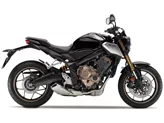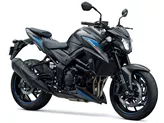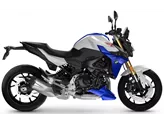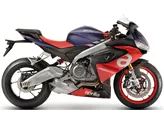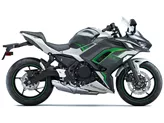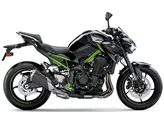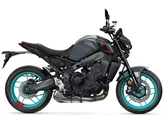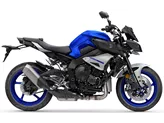Honda CB650F 2017 vs. Kawasaki Z900 2019

Honda CB650F 2017

Kawasaki Z900 2019
Overview - Honda CB650F 2017 vs Kawasaki Z900 2019
The Honda CB650F 2017 and the Kawasaki Z900 2019 are both naked bikes that offer a thrilling riding experience. However, they have some key differences in terms of their technical specifications and strengths.
Starting with the engine, the Honda CB650F 2017 is equipped with a 649cc inline-four engine that delivers 91 horsepower and 63 Nm of torque. On the other hand, the Kawasaki Z900 2019 boasts a larger 948cc inline-four engine that produces 125.4 horsepower and 98.6 Nm of torque. This means that the Z900 has more power and torque, providing a more exhilarating ride.
In terms of suspension, both bikes feature a swing arm rear suspension with a monoshock absorber. However, the Honda CB650F has a telescopic fork front suspension, while the Kawasaki Z900 comes with an upside-down telescopic fork front suspension. This difference may result in slightly different handling characteristics, with the Z900 offering a lighter and more natural handling experience.

Honda CB650F 2017
Both bikes have double disk front brakes, but there are some differences in the specifications. The Honda CB650F has 320mm diameter disks with double piston calipers, while the Kawasaki Z900 has 300mm diameter disks with four piston calipers. Additionally, the Z900 utilizes petal technology for its front brakes, which may provide improved heat dissipation and braking performance.
In terms of rider assistance systems, both bikes are equipped with ABS for added safety. This helps to prevent wheel lock-up during braking, improving overall control and stability.
Both bikes have similar dimensions and weights, with a wheelbase of 1450mm and rear tire width of 180mm. However, there are some differences in seat height and weight. The Honda CB650F has a seat height of 810mm and a kerb weight of 208kg with ABS, while the Kawasaki Z900 has a slightly lower seat height of 795mm and a slightly higher kerb weight of 210kg with ABS.

Kawasaki Z900 2019
Moving on to the strengths of each bike, the Honda CB650F 2017 offers sufficient torque even at low revs, a sporty chassis, LED lighting technology, and a grown-up look. On the other hand, the Kawasaki Z900 2019 is praised for its light and natural handling with high stability, silky engine with full pull from mid revs, high chassis transparency with great feedback, and a sitting position that provides a feel-good factor. Additionally, the Z900 is considered to have a fair price, making it an attractive option for riders.
However, both bikes have their weaknesses as well. The Honda CB650F 2017 has a difficult-to-read display, which may be inconvenient for some riders. On the other hand, the Kawasaki Z900 2019 has a TFT display that is mounted too low, making it less visible and potentially distracting for the rider. Additionally, the menu operation on the Z900's display is cumbersome, and the rearview mirrors offer modest visibility.
In conclusion, while both the Honda CB650F 2017 and the Kawasaki Z900 2019 offer exciting riding experiences, they have some notable differences in terms of their technical specifications and strengths. The Z900 boasts a more powerful engine and lighter handling, while the CB650F offers a sporty chassis and LED lighting technology. Ultimately, the choice between these two bikes will depend on the rider's preferences and priorities.
Technical Specifications Honda CB650F 2017 compared to Kawasaki Z900 2019
Pros and Cons in comparison
Pros and Cons in comparison
Honda CB650F 2017

Dans sa dernière version, la Honda CB 650 F 2017 est exactement la moto naked à quatre cylindres que nous voulions chez Honda. Le réglage du moteur et le rapport de transmission plus court garantissent un sprint rapide à 100 km/h, avec un son de quatre cylindres criant. Le réglage du châssis est également très sportif, ce qui permet de se sentir immédiatement à l'aise sur la Honda. Avec la technologie d'éclairage LED, Honda prouve que la CB 650 F est en phase avec son temps, seul l'écran mérite d'être revu.
Kawasaki Z900 2019

La nouvelle Kawasaki Z900 n'a heureusement rien perdu de son essence avec l'utilisation de l'électronique. Elle est et reste une nakedbike de classe moyenne ludique à utiliser, qui maîtrise en même temps de manière grandiose les allures rapides sur les routes de campagne. Le plaisir de conduire et l'aptitude à l'usage quotidien sont élevés, les aides à la conduite désormais intégrées offrent un plus en matière de sécurité. Vos adversaires auront désormais la vie dure.
Price Comparison Avarage Market Price Honda CB650F vs Kawasaki Z900
There are a few key differences between a Honda CB650F 2017 and a Kawasaki Z900 2019. It takes less time to sell a Honda CB650F with 72 days compared to 116 days for a Kawasaki Z900. Since model year 2014 1000PS.de editors have written 14 reviews for the Honda CB650F and 46 reviews for the Kawasaki Z900 since model year 2017. The first review for the Honda CB650F was published on 11/4/2013 and now has more than 14,100 views. This compares to more than 93,200 views for the first review on Kawasaki Z900 published on 11/11/2016.





